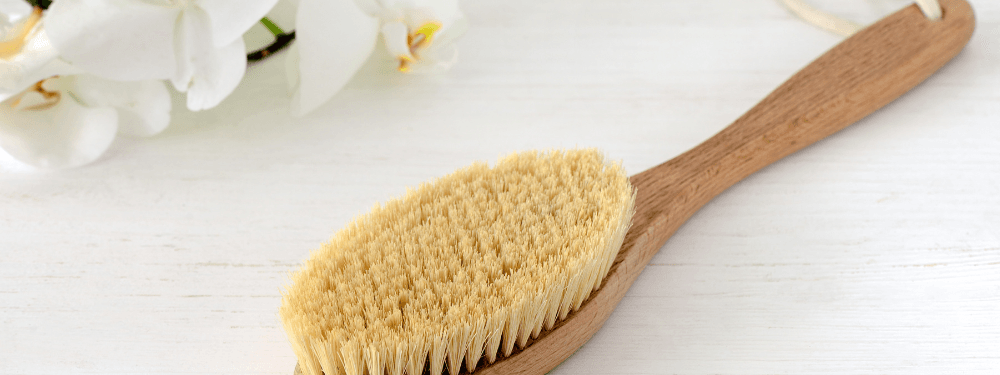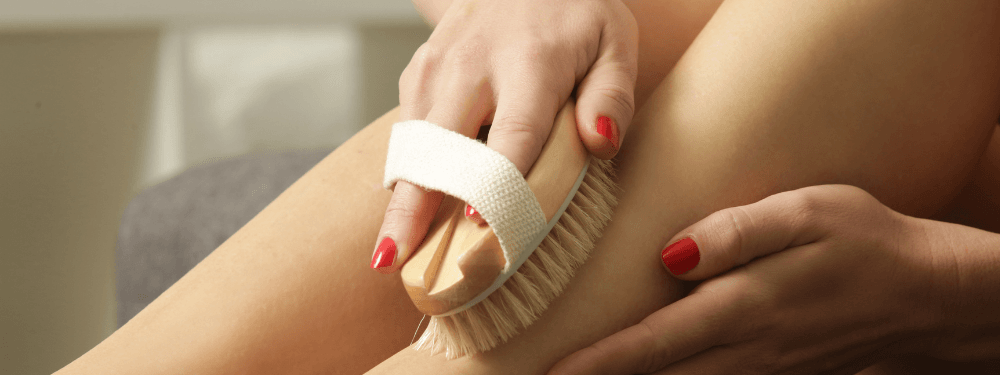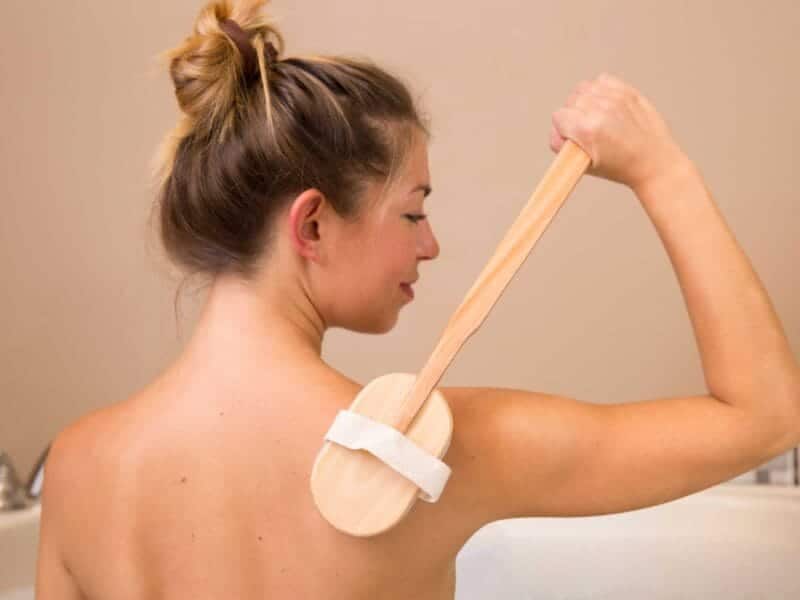As with all TikTok skincare trends, dry brushing has legions of devout followers. But as we’ve learned in previous blog posts, we shouldn’t necessarily equate popularity with effectiveness. So, before grabbing a brush and scouring your skin, let’s find out if there’s any merit to the thousands of testimonials.

What is dry brushing?
For the uninitiated, dry brushing is very close to what you’re picturing in your mind right now if what you’re picturing is dragging a dry, stiff-bristled brush up and down your arms, legs, torso, and back (if you can reach). This daily “massage,” as it’s been described, is said to help digestion, stimulate the nervous system, “detoxify” the skin, and shed flaky skin.
While dry brushing is distinctly different from many people’s idea of a massage, both can leave you feeling invigorated, which stems from stimulating the nervous system. Also like a massage, dry brushing can increase circulation.
Many of the skin-related claims of dry brushing also appear to be true, or at least they’re worth exploring further.
The mechanical action of dry brushing is basically exfoliating, which unclogs pores and makes it easier for the body to sweat and eliminate toxins in your system. It also removes dead skin cells, and that can make your skin smoother and softer. It can also temporarily give your skin a brighter appearance.
If you’ve ever exfoliated in a similar way during a shower, dry brushing is actually the preferred method because brushing your skin while it’s dry enables all of the above without robbing your skin of moisture, which is exactly what hot water does. More specifically, hot water inflames the skin and can strip away essential oils, fats, and proteins from your skin.
Dry brushing is also touted for reducing the appearance of cellulite, but there’s currently no scientific evidence to support this claim. What some people are interpreting as cellulite reduction is more likely a temporary plumping of the skin from increased circulation.

Is dry brushing right for me?
Having sensitive skin doesn’t necessarily preclude you from dry brushing. But if you notice redness, swelling, or inflammation while brushing, stop immediately.
Also, avoid brushing moles, warts, and raised bumps, as well as skin that’s broken (cuts, scrapes, sores), sunburned, inflamed, or generally irritated.
How to dry brush
Look for a natural stiff-bristled brush. If you want to be really thorough, opt for one with a long handle for hard-reach-spots, like your back. But an elongated handle can also get in the way. Not all dry brushes are the same; some bristles are stiffer than others. How stiff you should go will depend on your skin’s sensitivity.
The best time to dry brush is right before a shower. Then you can wash off any flaky skin and dead skin cells. And, of course, moisturize afterward.
You should start at your feet and work your way up your legs in long, fluid strokes. Repeat the process on your arms, starting at the top of your hands and working your way toward your shoulders. A few swipes per area is sufficient. Going over the same spot too many times can cause irritation and bleeding.
Next, move the brush in a circular motion on your torso and then your back. Since the abdomen, breasts, and neck can be more sensitive, lighten the pressure as needed.
The skin on your face is too sensitive for dry brushing. Stick with products and methods designed specifically for exfoliating the face.
To see the full range of benefits, aim to dry brush once a day.



 Break These Bad Habits and You’ll Unlock a Fountain of Youth for Your Skin
Break These Bad Habits and You’ll Unlock a Fountain of Youth for Your Skin